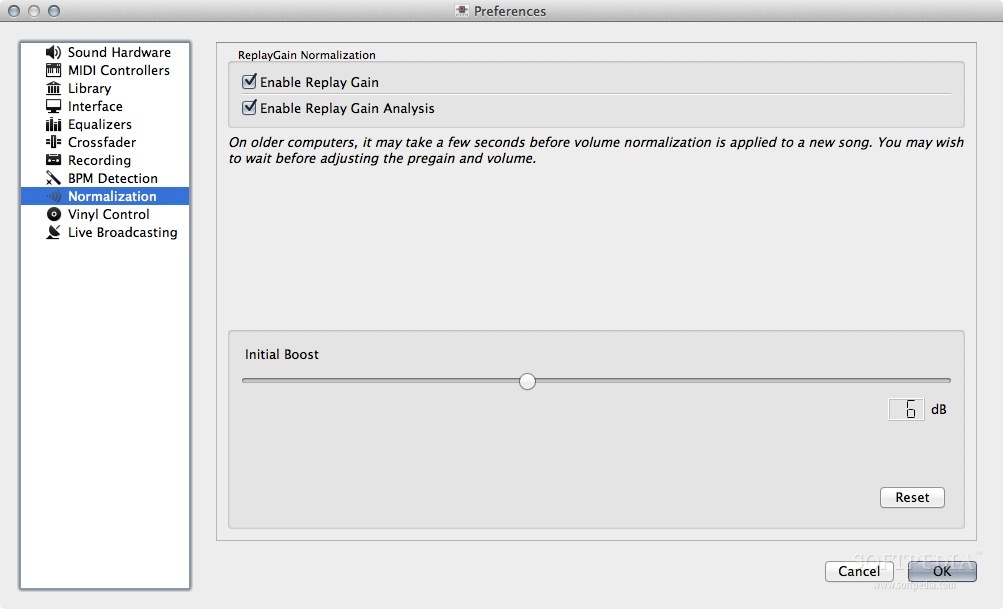Mixmeister Normalize Volume
Audio normalization is the application of a constant amount of gain to an audio recording to bring the amplitude to a target level (the norm). Because the same amount of gain is applied across the entire recording, the signal-to-noise ratio and relative dynamics are unchanged. Normalization is one of the functions commonly provided by a digital audio workstation.
Two principal types of audio normalization exist. Peak normalization adjusts the recording based on the highest signal level present in the recording. Loudness normalization adjusts the recording based on perceived loudness.
Normalizer Volume Software - Free Download Normalizer Volume - Top 4 Download - Top4Download.com offers free software downloads for Windows, Mac, iOS and Android computers and mobile devices. Visit for free, full and secured software’s. Nov 21, 2014 Adjust the volume of one or more WAV files at the same time to a constant level with the help of this lightweight and easy to use application What's new in WAVNormalizer 1.0.4 Build 205: Now you. Replaygain will always try to lower the volume to 89dB. If you adjust the replaygain values by subtracting the 4dB then you must add that 4dB back when loading the files the next time. If you don't, mp3gain will assume the current values are based on 89dB. If you do the same -a -d 4 -c then it will raise the. Create custom party mixes, burn CDs, or add special effects to MP3s with this line of DJ software for the novice and pro. Offers free trials and user community. MixMeister monitors but is not active in this community. How normalize/compression volume.Mixmeister Studio7.7 Win 10 64bit. (where volume is intentionally.
Audio normalization is the application of a constant amount of gain to an audio recording to bring the amplitude to a target level (the norm). Because the same amount of gain is applied across the entire recording, the signal-to-noise ratio and relative dynamics are unchanged. Normalization is one of the functions commonly provided by a digital audio workstation.
Normalization differs from dynamic range compression, which applies varying levels of gain over a recording to fit the level within a minimum and maximum range. Normalization adjusts the gain by a constant value across the entire recording.
Peak normalization[edit]
One type of normalization is peak normalization, wherein the gain is changed to bring the highest PCM sample value or analog signal peak to a given level – usually 0 dBFS, the loudest level allowed in a digital system.[1]
Since it only searches for the highest level, peak normalization alone does not account for the apparent loudness of the content. As such, peak normalization is generally used to change the volume in such a way to ensure optimal use of available dynamic range during the mastering stage of a digital recording. When combined with compression/limiting, however, peak normalization becomes a feature that can provide a loudness advantage over non-peak normalized material. This feature of digital recording systems, compression and limiting followed by peak normalization, enables contemporary trends in programme loudness.[2][3]
Loudness normalization[edit]
Another type of normalization is based on a measure of loudness, wherein the gain is changed to bring the average amplitude to a target level. This average can be a simple measurement of average power, such as the RMS value, or it can be a measure of human-perceived loudness, such as that offered by ReplayGain, Sound Check and EBU R128.[1]
For example, YouTube’s reference level is −14 LUFS, so if a program is analyzed to be −10 LUFS, YouTube will lower the level by 4 dB to bring it to the reference of −14 LUFS.
Industry kits nebula omnisphere 2 torrent. This Baby Is LOADED & Ready To Go With Preset Types Such As:AtmosBassBellsFXKeysLeadsMiscOrgansPadsPlucksStringsSynthsWoodWindsCheckOut The VIDEO DEMO Below & Hear Just Why You Need This Bank In Your Life.

Loudness normalization was created to combat varying loudness when listening to multiple songs in a sequence. Before loudness normalization, one song in a playlist might be quieter than the rest, so the end listener would have to turn up a volume knob to adjust the playback volume.[4] Ddj wego virtual dj mapping download.
Depending on the dynamic range of the content and the target level, loudness normalization can result in peaks that exceed the recording medium's limits. Software offering such normalization typically provides the option of using dynamic range compression to prevent clipping when this happens. In this situation, signal-to-noise ratio and relative dynamics are altered.
Loudness standards[edit]
Standard loudness normalization reference level varies by location and application.[5]
- −24LUFS: ATSC A85 (US TV), NPRSS & PRX
- −23LUFS: EU R128 broadcast
- −14LUFS: Spotify, Youtube and other streaming platforms
See also[edit]
- Normalization (image processing), image analog
References[edit]
- ^ abDes (April 20, 2008). '10 Myths About Normalization'. Hometracked. Retrieved 2012-06-10.
- ^Shelvock, Matt (2012). Audio Mastering as Musical Practice. London: University of Western Ontario: EDT. p. 26.
- ^Katz, Bob (2007). Mastering Audio: The Art and the Science. Focal Press. p. 168. ISBN978-0-240-80837-6.
- ^'What are the 'loudness wars' and loudness normalization?'. Hybrid Studios. Retrieved 1 July 2018.
- ^Tépper, Allan Tépper. 'How many LUFS for ideal audio loudness? Why can't we be friends?'. Pro Video Coalition. Retrieved 11 July 2019.